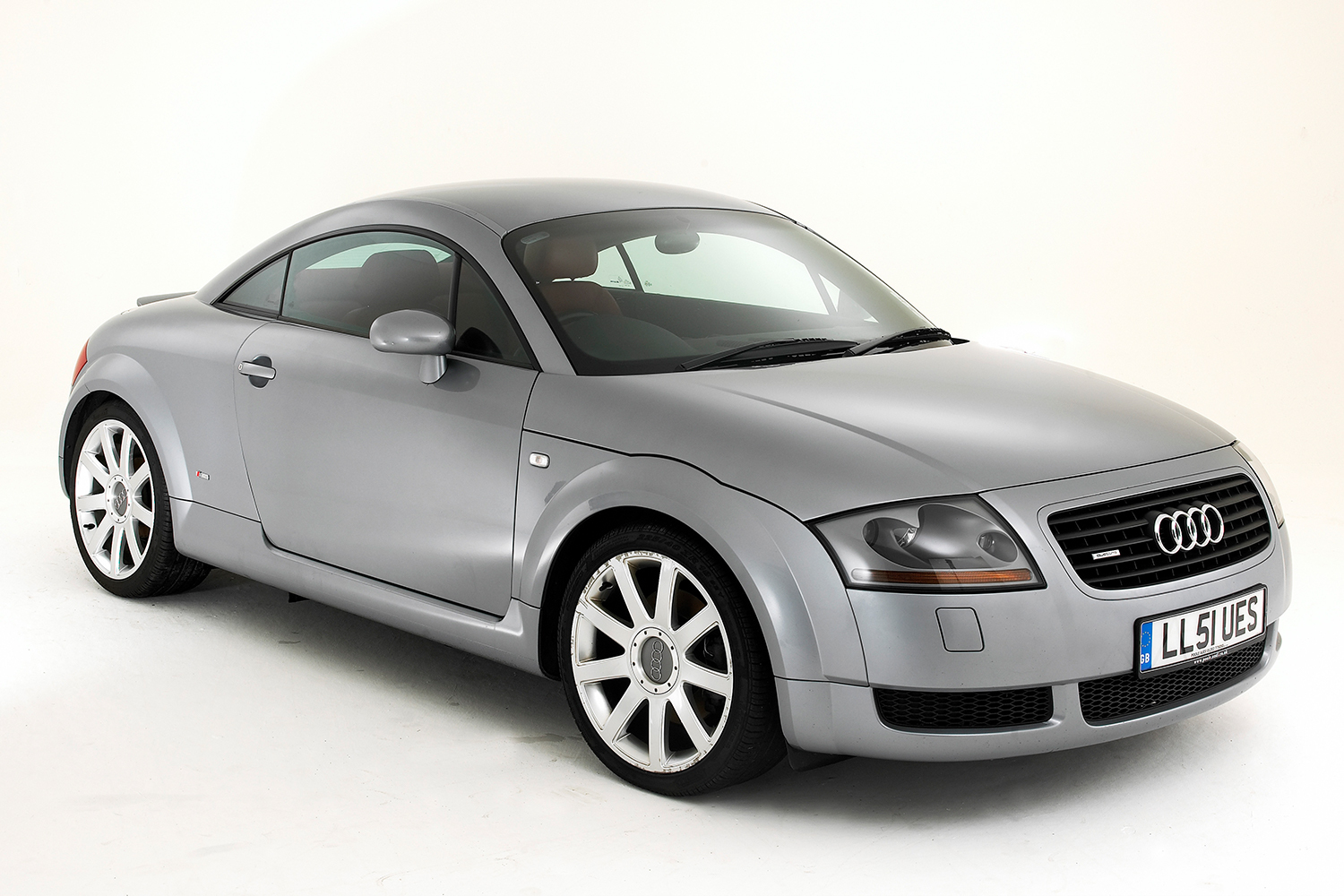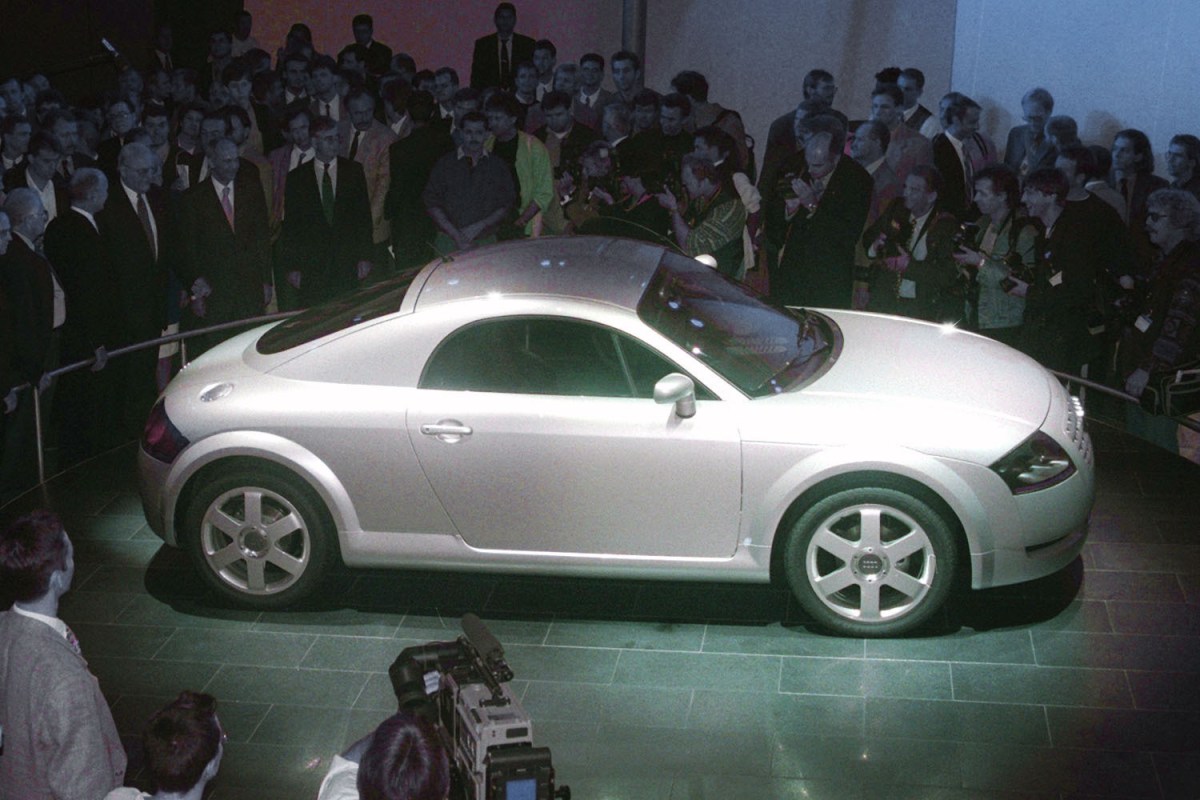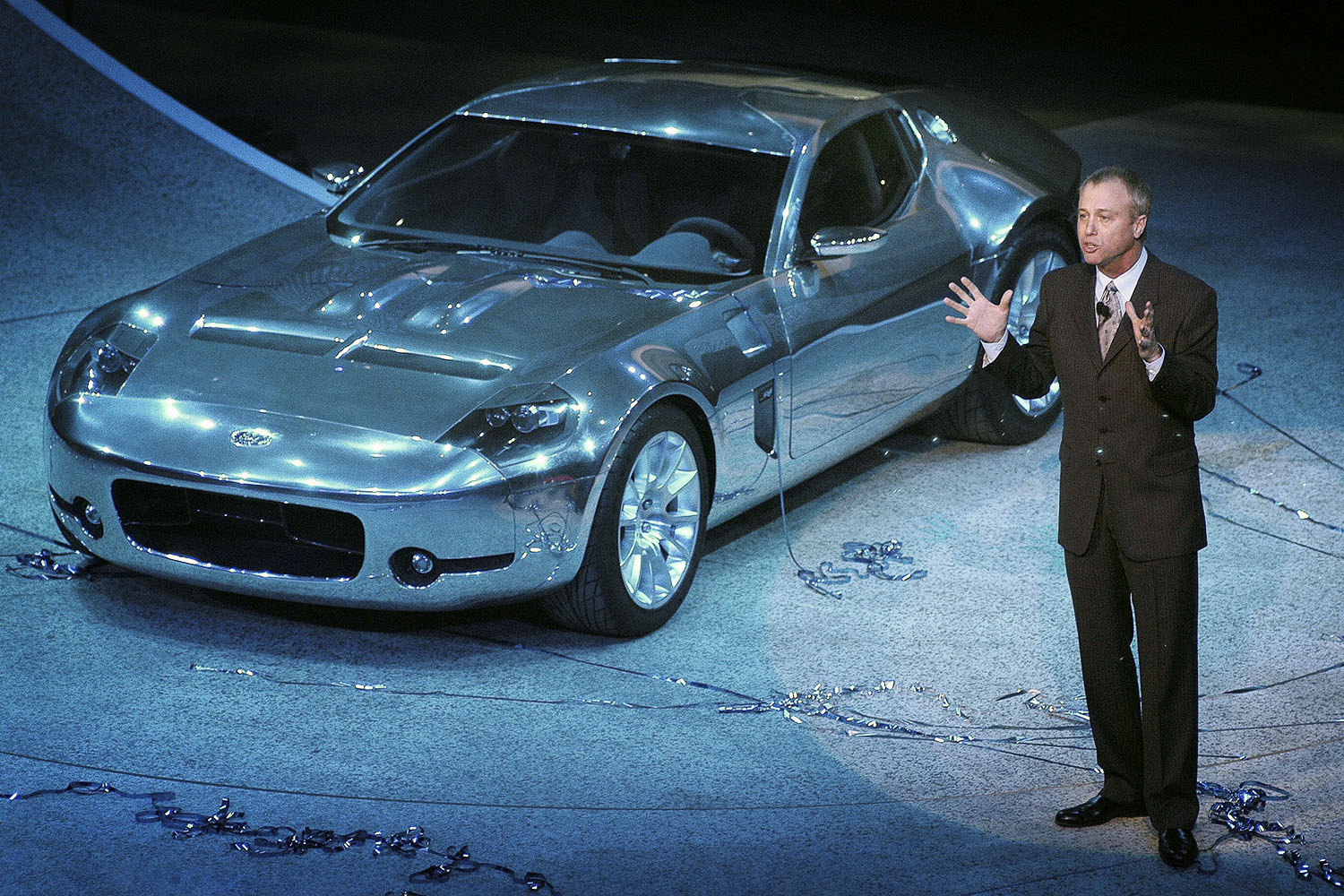It’s a common curse in the world of classic cars that some of the most intriguing automotive designs happen to be married to mechanical and electrical choices that haven’t aged nearly as well as their sultry sheet metal. Such is the case with the first-generation Audi TT, Ingolstadt’s groundbreaking egg that arrived almost fully formed as a concept at the Frankfurt Motor Show in 1995, before making its way into dealerships a few years later.
To say that the TT sparked a revival at Audi is no exaggeration. The brand was in transition from third-choice to tastemaker among fans of German luxury, and the TT coupe cut a profile unlike anything that had worn the four rings in modern memory. The hatchback was quickly followed by a roadster, and the duo served as the heralds of Audi’s renaissance as it evolved into a true challenger for the dollars of would-be BMW and Mercedes-Benz buyers.
By all rights, the original Audi TT deserves to be considered a modern classic. A quick look through online auction results or even your local classifieds, however, reveals that the world at large has a slightly different perspective on the earliest TT’s place in the automotive pantheon. Prices for both the hardtop and the convertible skew towards the cheap side of the ledger even in the current superheated secondhand market, making them an absolute bargain for anyone seeking to fill a second or third garage slot.
What’s fueling the disconnect between the Audi TT’s theoretical greatness and the middling passions it stirs among enthusiasts and collectors alike? It turns out there’s more than one caveat that comes with turning towards the TT when seeking a stylish sports car.
From the Minds of Masters
When it arrived in the United States as a 2000 model, the Audi TT concealed a somewhat secret dichotomy from performance-car fans. Its stunning looks were the result of a clean-sheet approach from J Mays (a prolific designer who also penned the retro-futuristic Volkswagen New Beetle and Ford Thunderbird, among many others) and Freeman Thomas (a key contributor to the VW Concept 1 that became the New Beetle), both of whom would go on to extremely successful design careers, heading departments for brands as diverse as Volkswagen, Ford and DaimlerChrysler.
In the years before the TT concept was unveiled, Thomas was toiling out of VW’s Simi Valley design center, while Mays was serving as Audi’s design director in Germany. Both were graduates of Pasadena’s Art Center College of Design, and Thomas’s sleek ovoid shape for the TT (named after the Isle of Man’s Tourist Trophy motorcycle competition) dovetailed well with the stretched aero look of Mays’s Avus quattro concept that linked the brand’s new design language with its prewar Auto Union racing history.
By the time the well-received TT concept was slated for production, Mays had moved on, eventually landing as vice president of design at Ford just a few months before his Audi creation went on sale. Thomas left briefly to work under Mays as a consultant before returning to Volkswagen as the chief of Simi Valley in 1996.
As much attention as the TT’s exterior attracts, it’s also worth noting its innovative interior trappings. Specifically, the cabin-focused team of Hartmut Warkuss, Martin Smith, Romulus Rost and Peter Schreyer (the man who dragged Kia’s designs from also-ran to segment-leading) had baseball on the brain, positing that riding in the coupe should feel like being ensconced in a catching glove (eventually leading to a rare baseball-glove-leather interior option).

A Life More Ordinary
Unfortunately for enthusiasts, the Audi TT’s outstanding shape and intriguing interior obfuscated the fact that the car rode on a very ordinary platform. The conservatism of its mechanical details (pulled from the Volkswagen Golf and Audi A3 parts bin) were a reflection of the automaker’s economics at that time. Yes, Audi was willing to take a big swing with a car that sizzled on the showroom floor, but not if it required a deep investment to bring it from car show pedestal to customer driveways.
Under the hood sat a 1.8-liter, turbocharged four-cylinder engine good for 180 horsepower in the base front-wheel drive model (or 225 horsepower for those who waited for the all-wheel drive edition that arrived in 2001). A six-speed manual gearbox was available with the latter (one more forward gear than offered at entry-level), and a six-speed automatic could be had across the board.
The TT’s computer-controlled Haldex all-wheel drive system was a departure from Audi’s traditional mechanical quattro setup, and it did little to dial-out the car’s front-heavy, understeer-prone tendencies. It wasn’t long before the motoring press caught on to the fact that while the TT was gorgeous to look at and comfortable to cruise, it was far from exciting when driven in anger. This was problematic in the face of new efforts from BMW (the front-engine, rear-wheel drive Z3) and Porsche (the mid-engine, rear-wheel drive Boxster), each of which easily showed the TT its taillights on a twisty road.
Then there was the car’s rather troubling handling characteristics at triple-digit speeds. The Audi’s slippery shape led to accident-causing instability, provoking the company to eventually install a rear spoiler, revised suspension geometry and a reprogrammed stability control system (forcing a recall of pre-2000 Euro-market cars to do the same).
Despite these challenges, Audi managed to sell over 50,000 units in the TT’s first year globally, a number that eventually dropped to 23,000 per year by the mid-2000s. Along the way, the first-generation car saw the introduction of a 250 horsepower, 3.2-liter V6 (or VR5 in Audi/Volkswagen-speak), which arrived for the 2004 model year (along with an available dual-clutch automated manual gearbox) to substantially boost the TT’s kick-in-the-pants. And then an all-new TT hit the streets for 2007, muting the original’s iconic looks in favor of a more aggressive approach.
Shaky Foundation
At first glance it would seem that, seen through the lens of time, the TT should be a strong choice for grand touring fans — at least those comfortable with giving up some adrenaline found in the car’s BMW and Porsche rivals in exchange for the Audi’s better-aged design and comfortable long-distance drive.
Yet it’s here that the Audi’s VW-derived details perform their second act of betrayal. To put it mildly, the first-generation TT has developed a reputation as being among the most finicky of that era’s sporty machines, prompting 13 total recalls and not one but two class-action lawsuits (concerning timing belt failures and instrument clusters).
Regardless of history, timing belt replacements are required every 60,000 miles or six years, an expensive task made more difficult by the extreme tightness of the tiny TT’s engine bay. Turbocharged cars suffer from alternator failures, oil leaks, and cracked vacuum hoses and connectors, as well as bad mass air flow meters. Ignition coil packs and water pumps are other trouble spots. These problems can all be exacerbated by any of the poor aftermarket tunes that were common for the 1.8-liter motor’s ECU as an easy path towards additional torque.
V6 cars are generally more reliable, but poor-quality stock springs, dried-out bushings and a parade of electrical gremlins are common to all models (particularly door lock micro-switches and vehicle alarms). Many of these issues aren’t necessarily life-threatening for the TT, but in combination (and with repetition) they do run the risk of death by a thousand cuts to the piggy banks of owners.
A Modern Classic With an Asterisk — or Two
Cheap to buy, gorgeous to look at and decent to drive (within its touring design spec), the 2000-2006 Audi TT exists in a liminal space where its many charms are now balanced by its reputation for putting the hurt on owners’ pocketbooks due to reliability concerns.
Few would look to the crop of early-2000s toy-sized German options with an eye towards a dependable daily driver, but while same-year Z3 and Boxster rivals might be only marginally less expensive to maintain (reflected by similarly depressed secondhand pricing and their own lists of unusual letdowns), their amped-up driving dynamics have put them ahead of Audi’s visual stunner in the minds of sports-car fans.
The original TT is a fantastic design that suffers from Audi’s lackluster execution, concealing its more mundane aspects beneath a sheen of style that later generations of the car were unable to match. For many, the TT is a destination best visited in the form of a friend’s garage ornament, allowing someone else to shoulder the burden of care and feeding. For the most dedicated fans, however, ownership of Audi’s Bauhaus masterpiece remains too beautiful a cross not to bear.
This article was featured in the InsideHook newsletter. Sign up now.


























